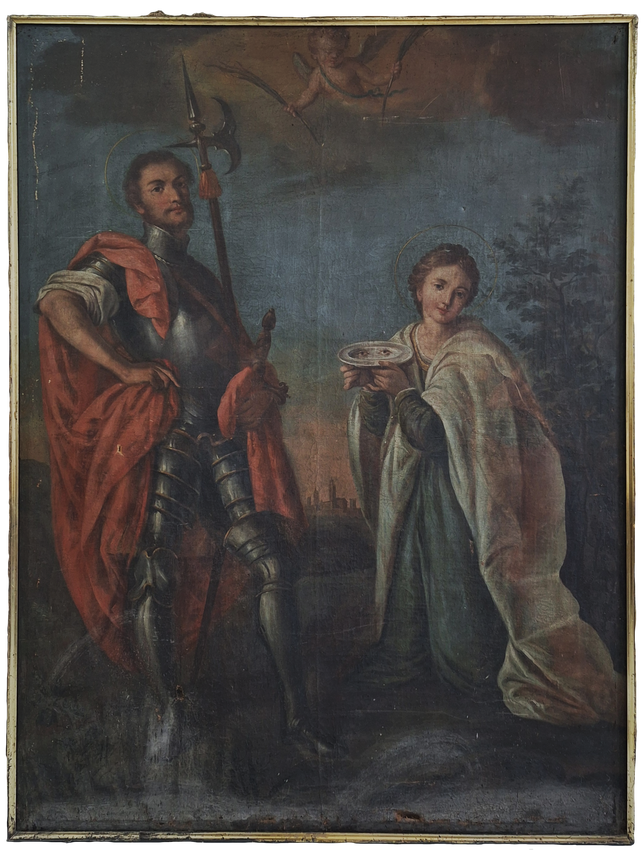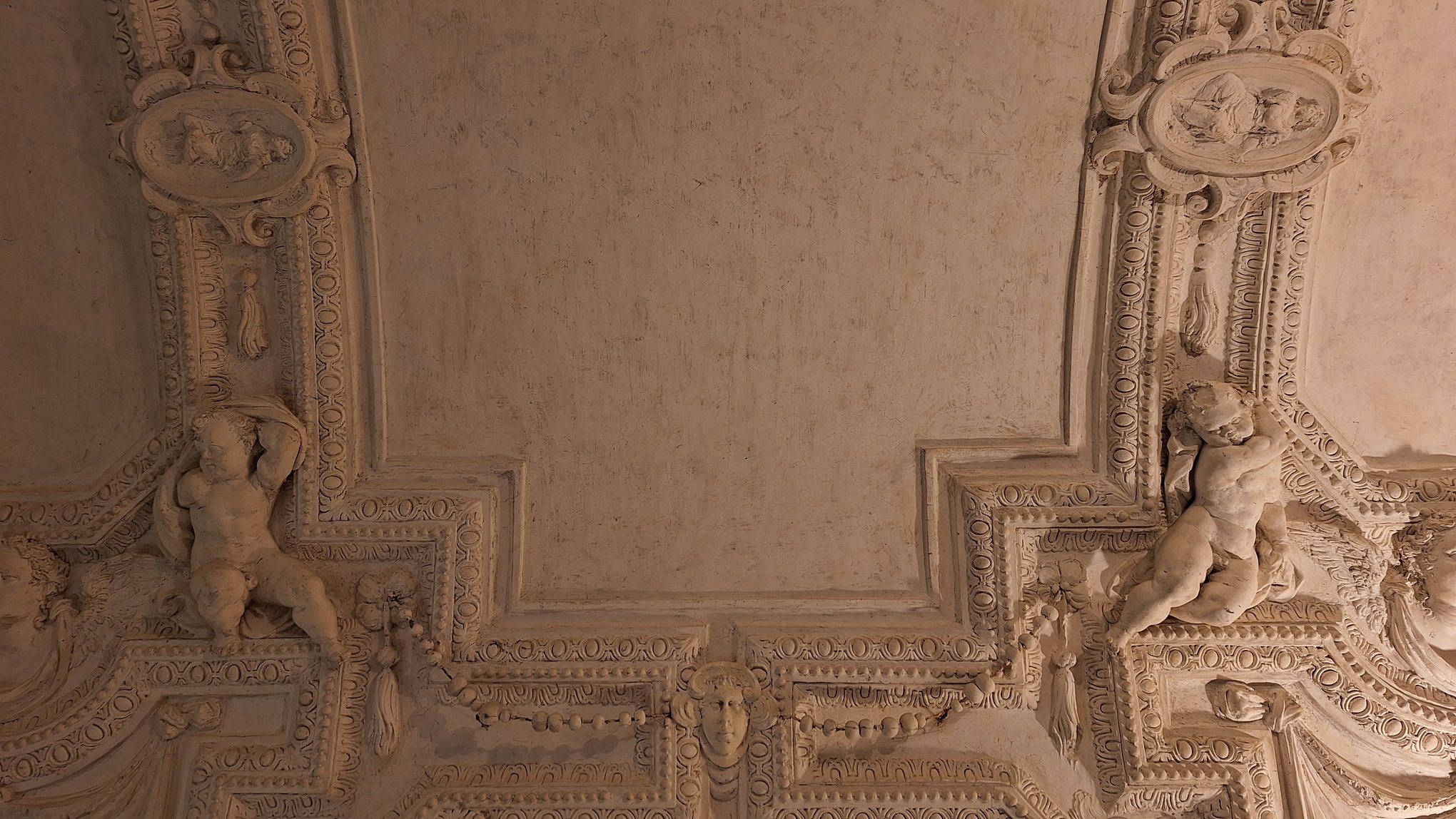
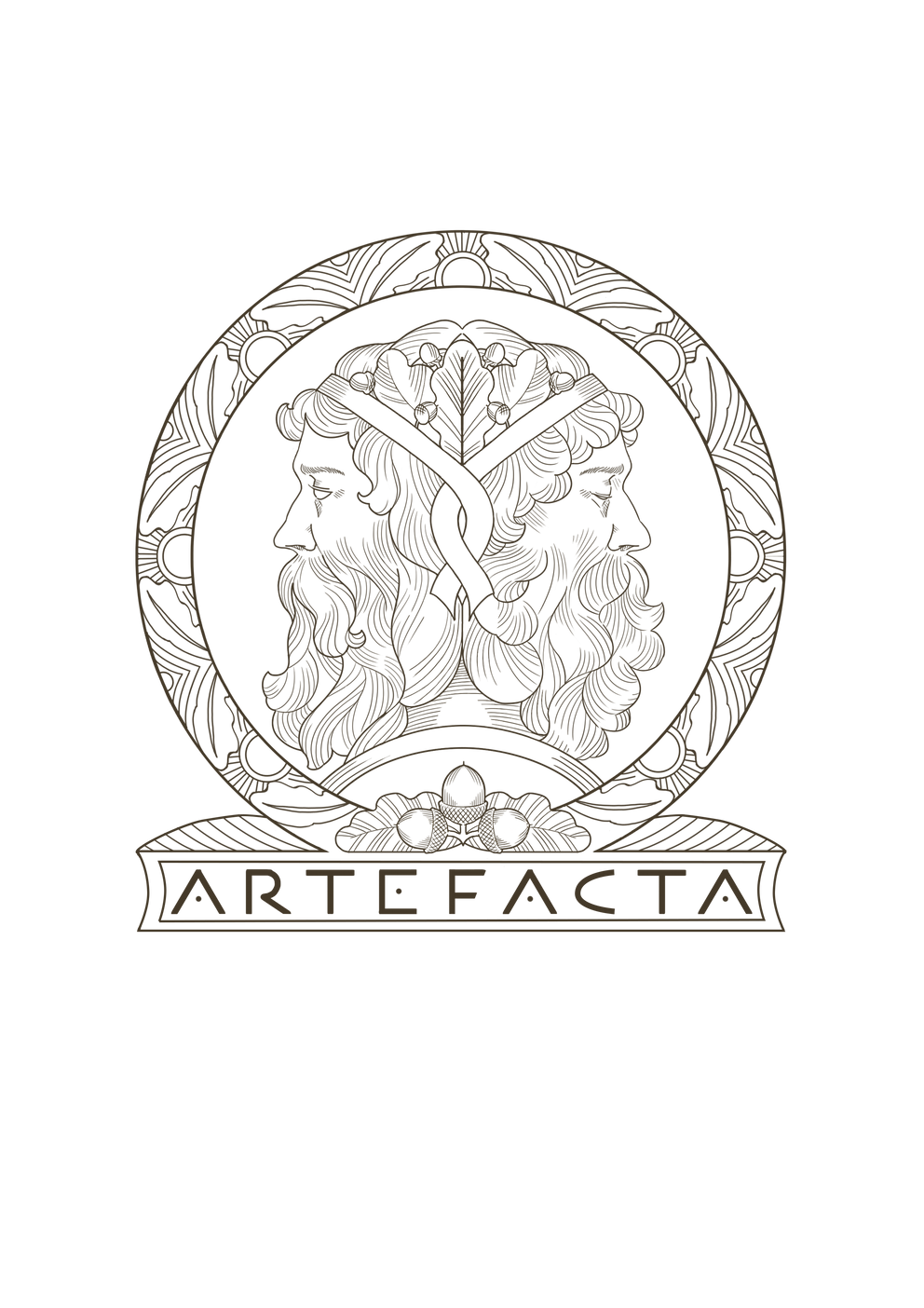


Treasures of the Italian Marche hills
The Rebirh of the Masterpieces in
Orciano di Pesaro
Arte Facta
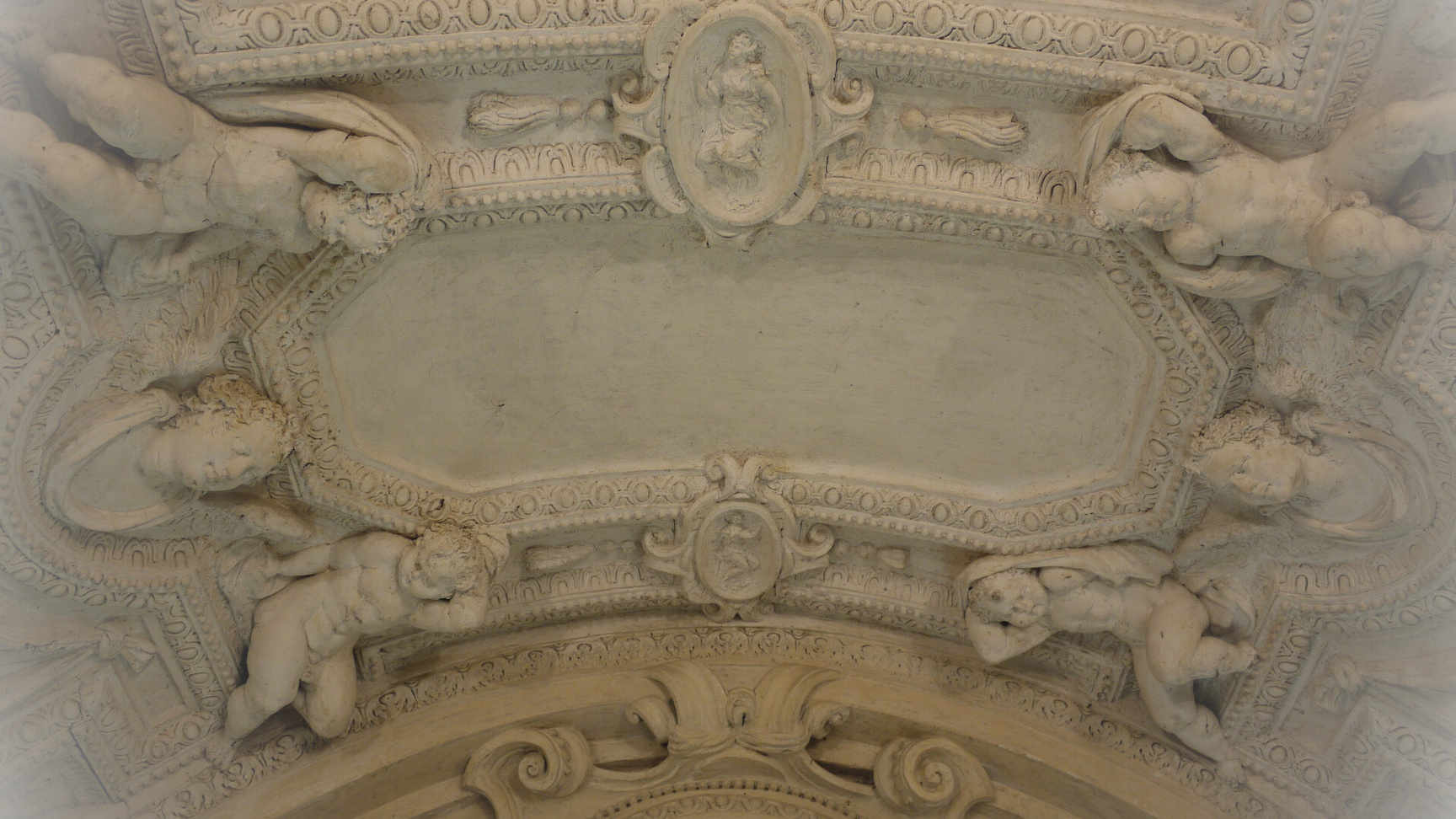

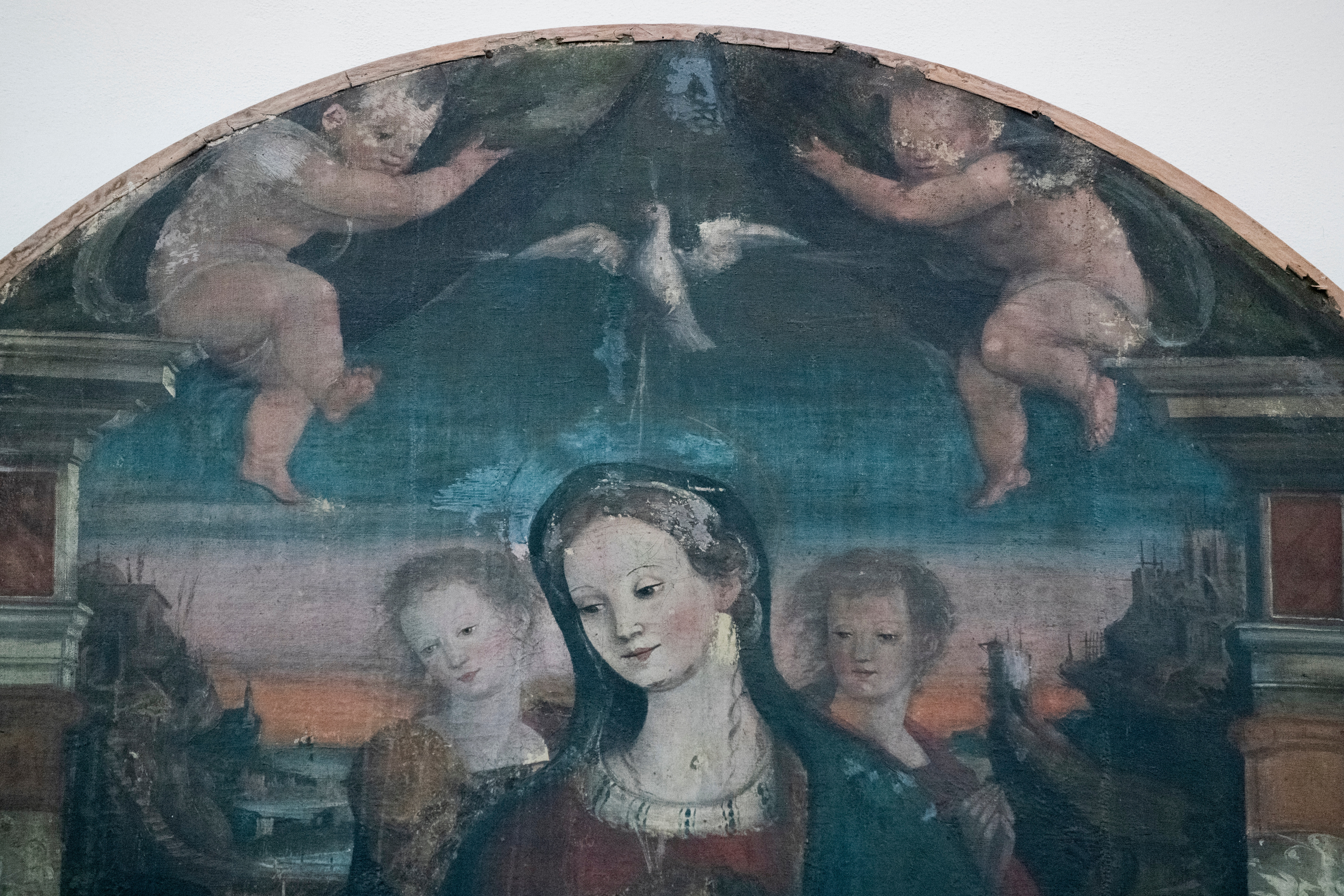
Mystic Marriage of Saint Catherine (1539)

The Painter
The work is by Pompeo Morganti for the church of San Silvestro in Orciano di Pesaro. Pompeo, son of Bartolomeo, was born in the first decade of the 16th century. After his beginnings in collaboration with his father, as early as 1535 he was commissioned by the City Council of Jesi to execute a painting for the Palazzo dei Priori. Documents attest to Pompeo's presence in 1555 among the members of the Holy Union of Fano.
The Painting
The painting depicts the moment when the Child Jesus, supported by the Virgin Mary seated on a throne, reaches out to slip the ring on the finger of St. Catherine of Alexandria. This gesture symbolizes a mystical marriage, a metaphor for her commitment to a Christian life of chastity.
St. Catherine of Alexandria is recognizable by the iconographic attribute of the cogwheel, foreshadowing her martyrdom, on which she is kneeling.
Around the Virgin, other female figures are arranged, all with haloes and in Renaissance clothing, contributing to an atmosphere of reverence. Among them, Saint Lucia can be recognized from the detail of the tray with the saint's eyes placed at her feet.
The little angels flying above the main scene add a touch of lightness and spirituality, while the dove in the center symbolizes the Holy Spirit. The presence of classical architectural elements, such as columns and arches, frames the scene and guides the eye toward the center of the painting, allowing glimpses of an idealized landscape in the background.
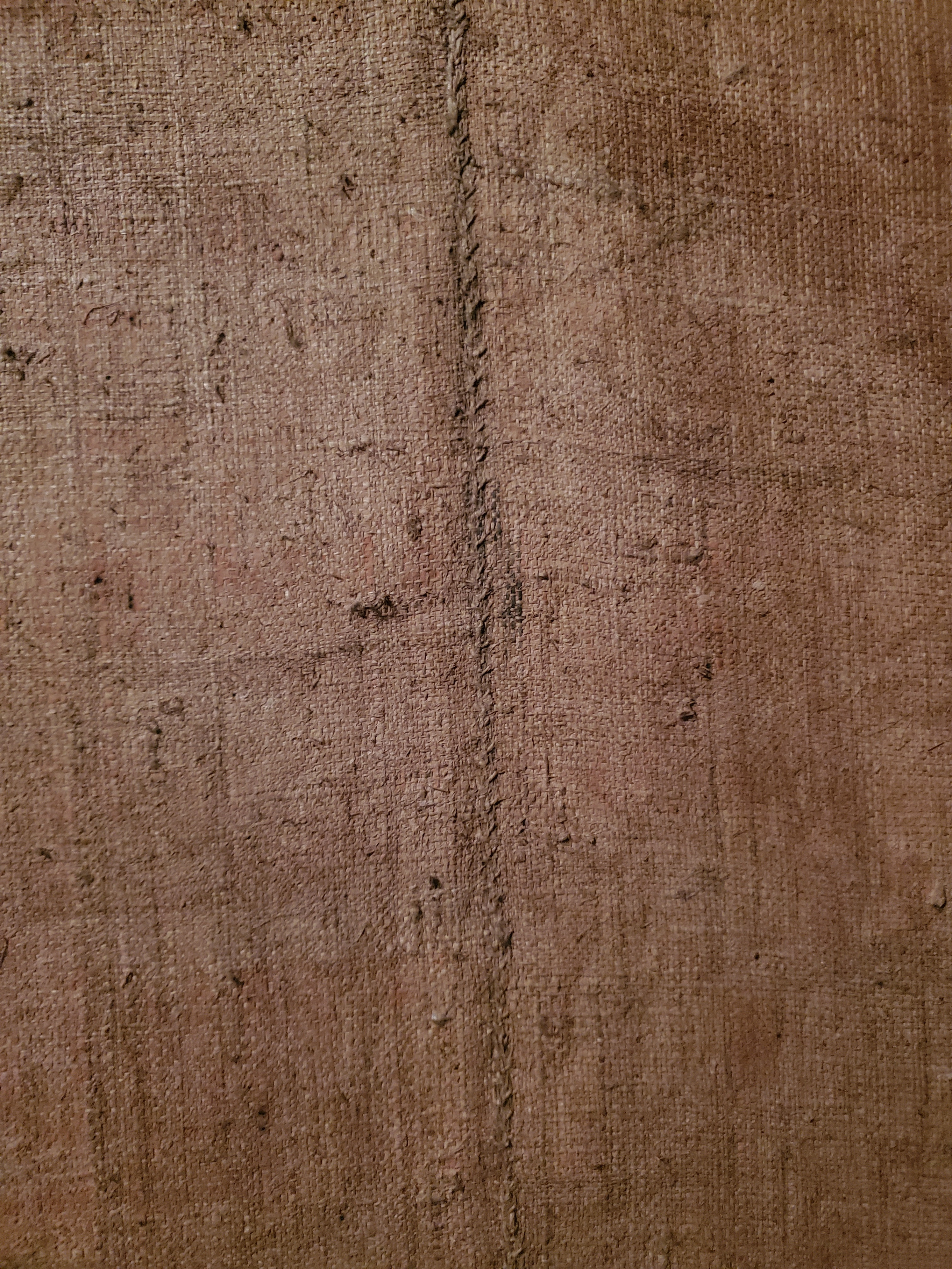
State of Conservation
The painting is in mediocre condition. The painted surface is obscured by substantial deposits, both coherent and incoherent (such as atmospheric particulates and other accumulated substances). The overlying finishing layer (varnish or another substance) appears oxidized, altering the chromatic qualities of the painted areas. The surface shows numerous and evident touch-ups, and some areas seem to have been repainted in previous restorations.
Restoration Interventions
1 - Documentation and exploratory studies
- Digital and graphic photographic documentation of the state of conservation and of the various restoration operations.
- Surveying and documentation sheet.
2 - Diagnostic investigations
- High-resolution near-infrared reflectography to inspect any preparatory drawings and slight modifications or pentimenti.
- UV-induced fluorescence to detect repainting interventions and the presence of certain types of pigments and binders.
- X-ray fluorescence analysis to investigate the painter's palette.
- Characterisation of preparatory layers and stratigraphic successions with micro-samples and microscopic examinations.
- Characterisation of the support fabric
3 - Consolidation of the substrate, preparatory and pictorial layers
- Consolidation and restoration of the adhesion of constituent materials and restoration of deformations of the textile support with moisture and vacuum pressure.
4 - Cleaning
- Removal of surface deposits and superficial substances (such as non-original varnishes or brighteners) with surfactants, gelled aqueous solutions and neutral organic solvents in gels.
5 - Lining the textile support
- Mounting of the canvas on the wooden frame using a spring tensioning system, with reinforcement of the original frame.
6 - Filling of gaps and aesthetic presentation
7 - Pictorial reintegration
- Pictorial reintegration of veiling abrasions and small gaps using a recognisable technique (hatching) to reconstitute the colour fabric and reduce visual interference.
8 - Surface protection
- Varnishing of the paint film with synthetic resins to protect and restore the refractive index and to limit UV damage.

The Risen Christ (XVII cent.)

The Statue
The Risen Christ from the church of Santa Maria Novella in Orciano is an important work of the Roman School. The wooden sculpture depicts Christ rising triumphant from the tomb, his torso slightly foreshortened and arms spread wide, suspended on golden clouds and surrounded by rays of shining light.
In keeping with tradition, with his right hand the Redeemer holds the Salvific Banner of the True Cross (St. George's Cross, also called the Cross of Victory), a red cross on a white background, symbolizing his triumph over death.
Below, beside the now empty tomb, a Roman soldier is dazzled by the unexpected event of the Resurrection miracle. Blinded by this burst of light, he covers his face with his arm, seeking shelter.
The soldier's cloak, along with the drapery that partially covers Christ's body and the flag drape, create a swirl that envelops the entire scene with dynamism.
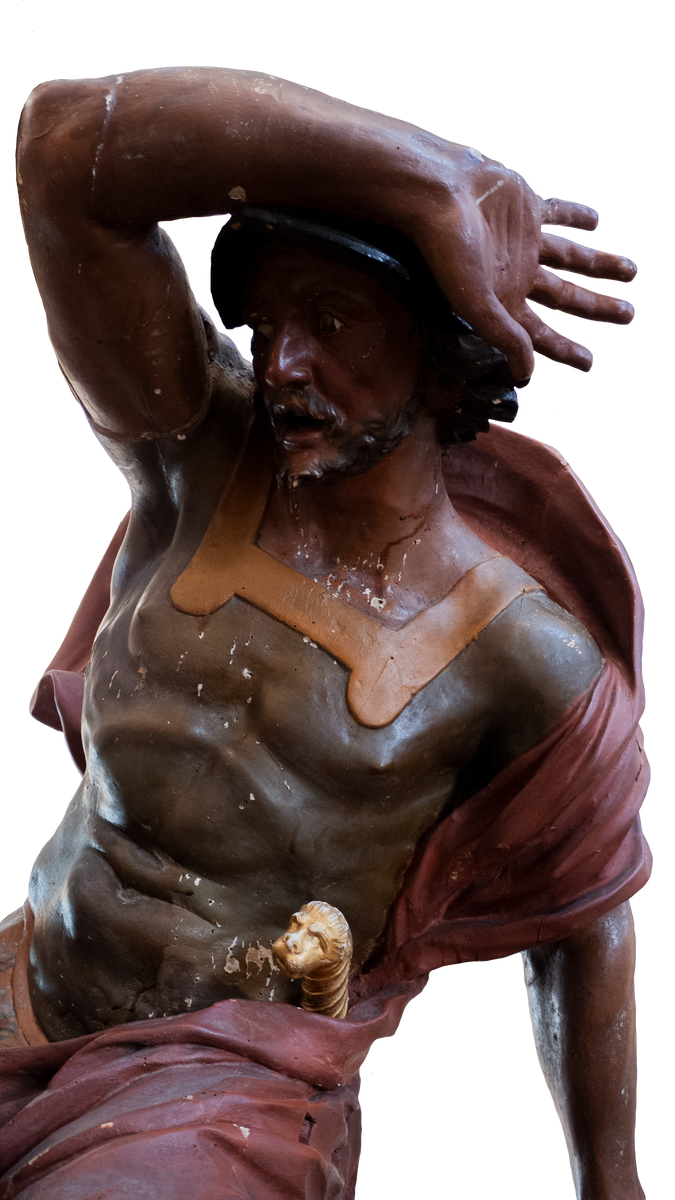

State of Conservation of the Statue
The sculptural group is in a precarious state of preservation.
The Risen Christ shows significant dust deposits and residues of candle smoke, with attacks by xylophagous insects that are no longer active and gaps in the pictorial layers, especially on the protruding parts. The painted surface shows a cracked appearance and some lifting of the pictorial decoration. The protective layer is aged and yellowed, altering the original tones of the sculpture.
The Roman Soldier suffers from severe structural and aesthetic problems, with cracks in the wood and decohesion of the paint film. The polychromy is deficient and covered by repainting, while a brown protective film, applied unevenly, further alters the original appearance of the sculpture.
Restoration Interventions
1 - Documentation :
- Scientific and photographic analyses to understand materials and degradation processes.
2 - Fixing :
- Re-attachment of the raised parts of the paint film by injections of adhesives.
3 - Cleaning :
- Mechanical removal of surface deposits with brushes and microaspirators.
- Chemical cleaning to remove non-original residues and improve the legibility of the work.
4 - Disinfestation :
- Treatment against xylophagous insects by application of permethrin in apolar solvents.
5 - Consolidation :
- Structural consolidation of the wood with injections of acrylic resins.
6 - Filling :
- Filling gaps in the pictorial layers.
- Closure of holes caused by woodworm.
7 - Pictorial reintegration :
- Reintegration of pictorial gaps.
- Mimetic reintegration of the gold and silver parts with micaceous colours.
8 - Surface protection :
- Application of final varnish with synthetic resins to protect and restore the correct refractive index of the surface.
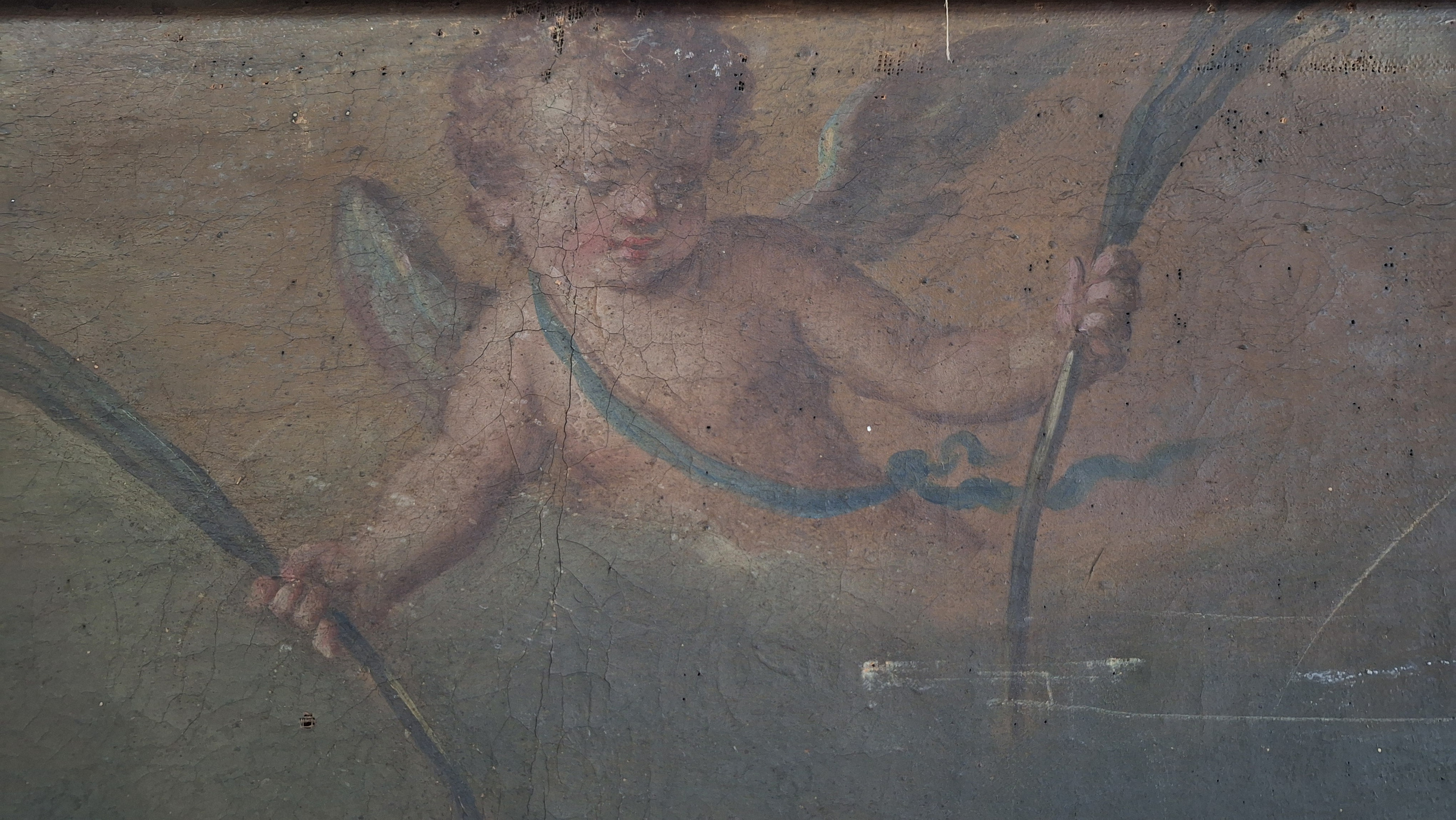
Saint Julian Hospitaller and Saint Lucia (1775)
The Painter
Carlo Magini, an artist born in Fano in 1720 and died in 1806, trained in the Umbria-Marches area under his uncle Sebastiano Ceccarini, also a well-known painter from Fano.
Together they collaborated in several artistic centers, including Perugia, Urbino, Bologna, Venice and Florence.
His artistic corpus is mainly characterized by portraits, historical scenes and still lifes.
The Painting
The painting is notable for its balanced composition and skillful use of color and light. The depiction of the saints, with their iconographic symbols and gazing toward the viewer, allow one to immerse oneself in a calm atmosphere of reflection and meditation.

Saint Julian wears an elegant suit of armor that reflects light with delicate metallic hues. His figure is further accentuated by the red cloak draped over his shoulders, which adds a touch of majesty and movement to the composition. In his left hand, St. Julian holds a sword and holds a spear, symbolizing his role as a knight and defender of the faith. His proud gaze directed toward the viewer instills a sense of protection and security.
Next to him, in a softer, more contemplative pose, we find Saint Lucy. The saint wears a dress in soft, light tones, contrasting with Saint Julian's dark armor.
The presence of the putto above, holding a palm tree - a symbol of St. Lucy's martyrdom - adds an additional element of sacredness and celebration of faith.
In the background, a serene landscape with a small town, probably Orciano, provides a peaceful setting for the sacred scene.

State of Conservation
The painting is in a very poor state of preservation. The painted surface is clouded by deposits of atmospheric particles and other substances. The varnish layer has oxidised, altering the original colours. There are cracks, lifts, holes, tears and deformations of the textile support, with insufficient stretching of the canvas.
Restoration Interventions
1 - Documentation and Diagnostic Surveys :
- Graphic documentation and investigation sheet.
- High-resolution reflectographic imaging.
- UV-induced fluorescence.
- X-ray fluorescence analysis.
- Characterisation of preparatory layers and substrate yarn.
2 - Consolidation
- Application of synthetic consolidating agent on the back of the canvas (Plextol B500).
- Adhesion of the constituent materials of the preparatory and pictorial layers with products such as Aquazol, BEVA O.F., Plexisol P550.
- Deformation restoration with moisture and vacuum pressure.
3 - Cleaning :
- Removal of surface deposits and overlying substances with neutral organic solvents and mechanical means.
4 - Lining :
- Partial lining of the edges with synthetic adhesives.
- Mounting of the canvas on a wooden frame with spring tensioning.
5 - Filling and Aesthetic Presentation :
- Filling of gaps with Bologna plaster and adhesive.
- Pictorial reintegration with watercolours and diluted varnishes.
- Surface protection with synthetic resins.
6 - Renovation of the Original Frame
How to Donate
Help us reach our goal and make a difference!
You can donate easily using one of the following methods:

Donation by Bank Transfer
Making a wire transfer is convenient and simple. Use the following details to complete your donation:
IBAN: IT 09 H 08700 09340 0000 0020 8671
SWIFT CODE : ICRAITRRJG0 (the last digit is a zero)
Holder : ASSOCIAZIONE CULTURALE "ARTE FACTA"
Bank : BCC DEL METAURO S.C.R.L.
Reason : Donation Restorations Arte Facta
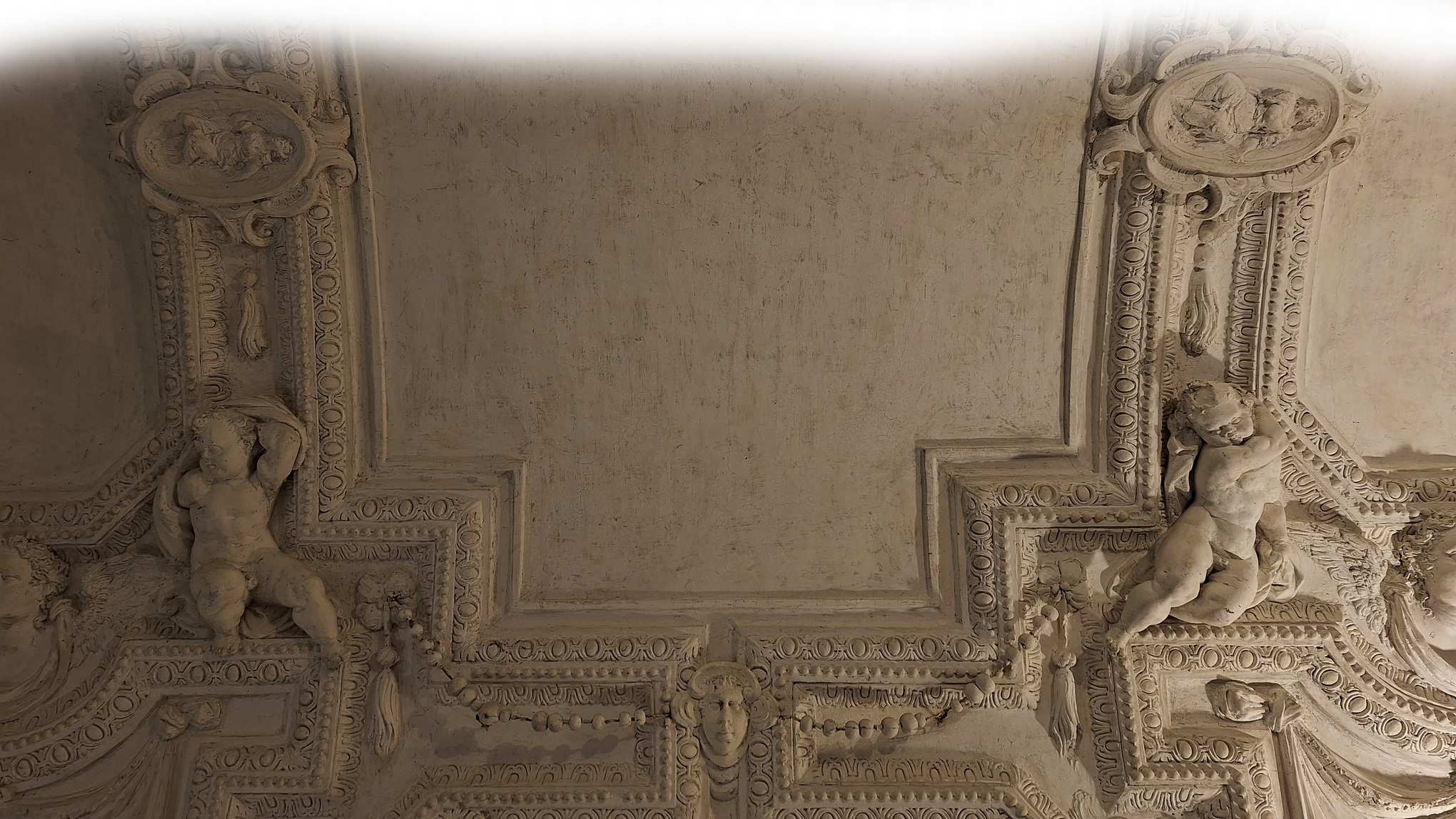
Thank you for your support!
Every contribution, big or small, is important and brings us closer to our goal.
By supporting this project, you are not only contributing to the preservation of Italian art but also participating in the global effort to maintain and celebrate humanity's shared cultural heritage.
Thank you for being part of this initiative and for your generous support !
artefacta.info@gmail.com

